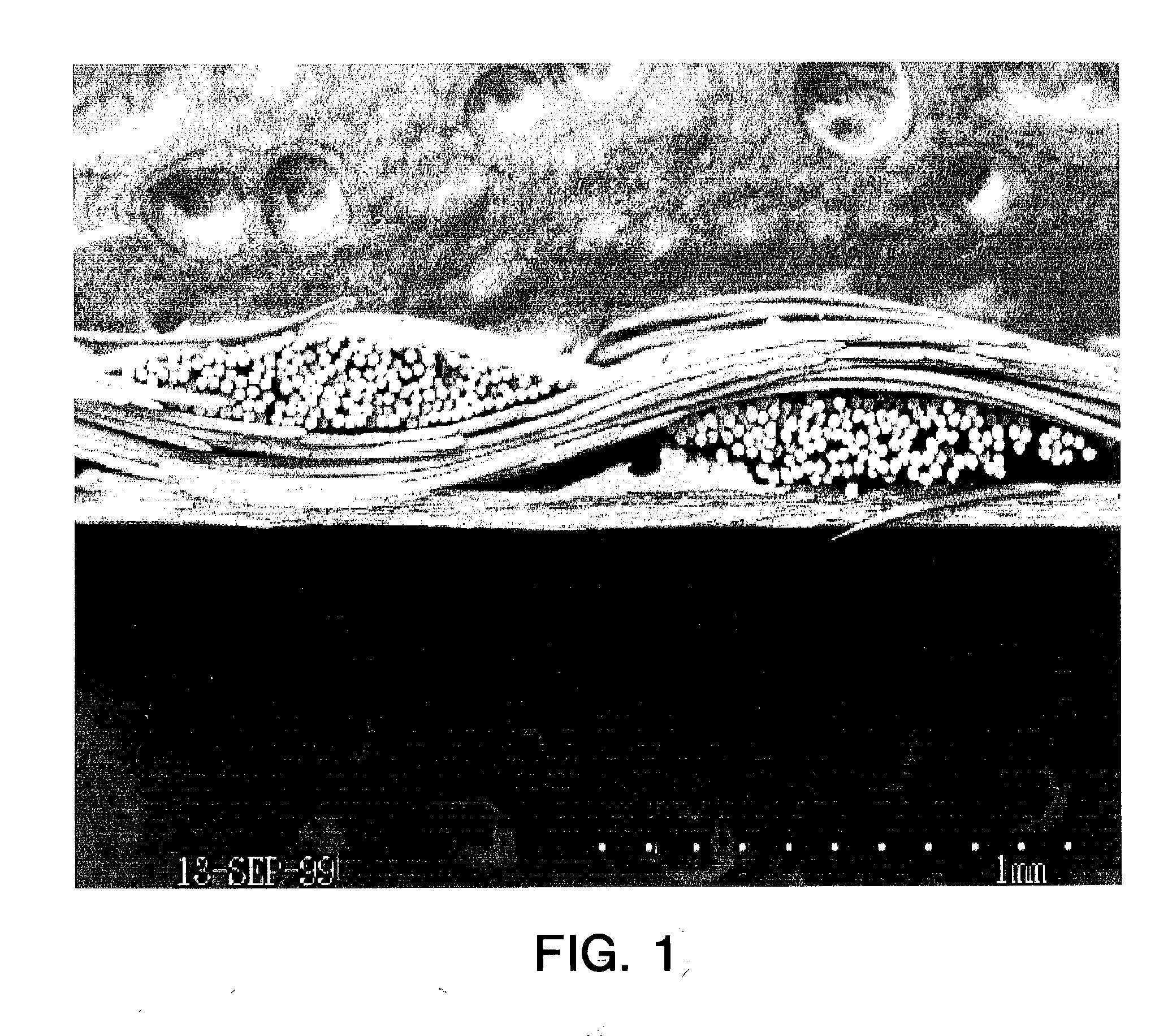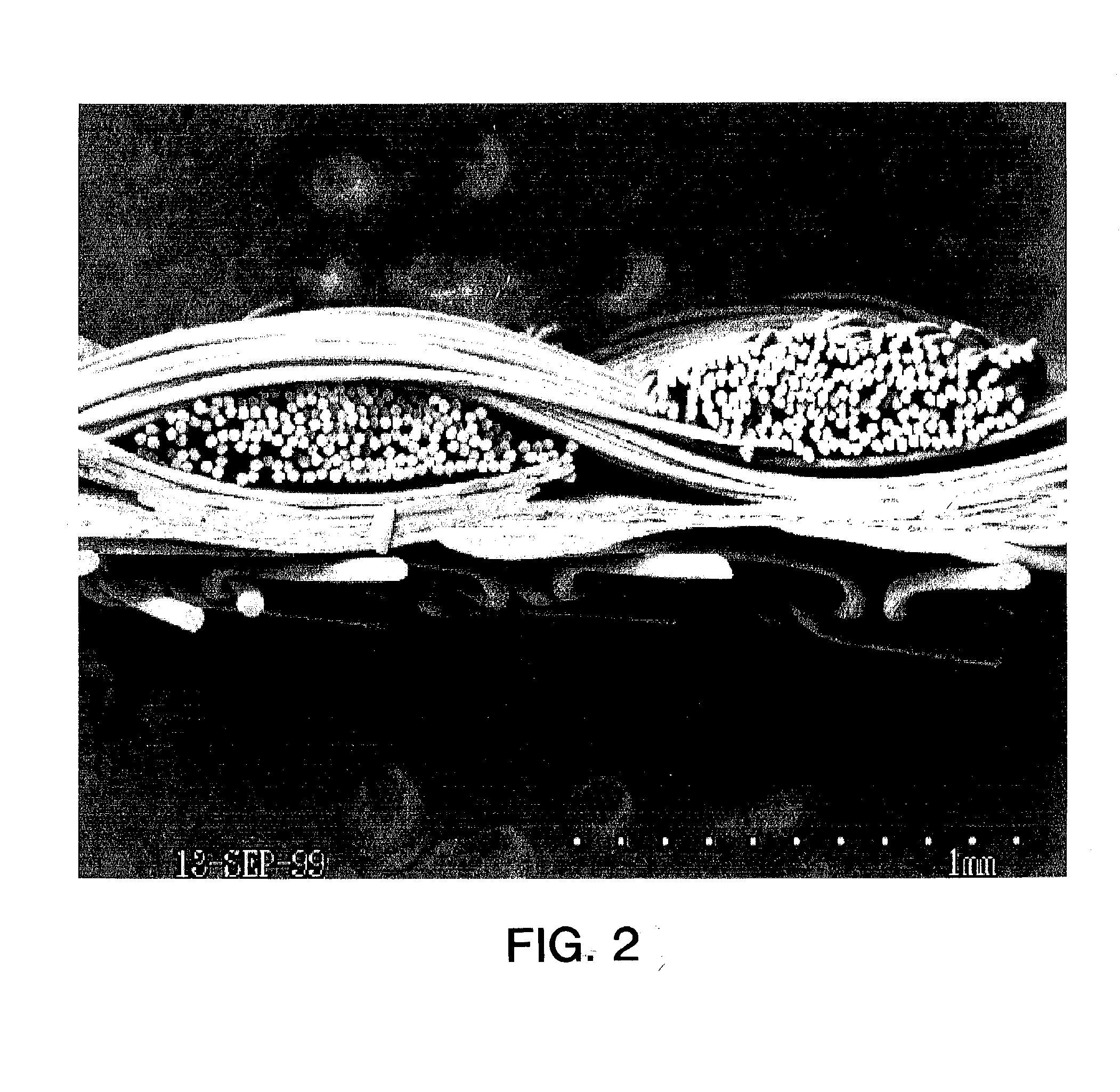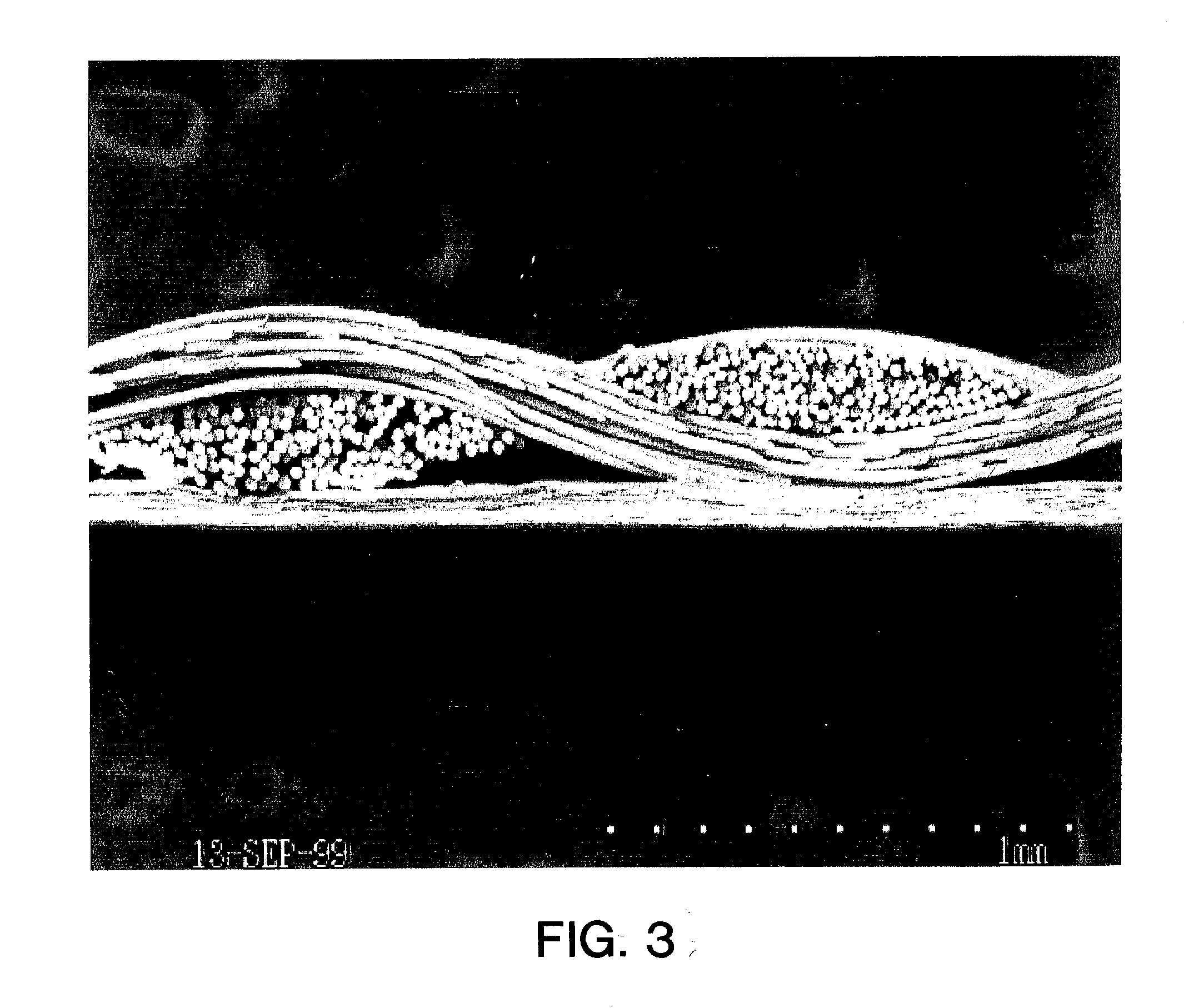Cover For Contained Aerobic Treatment of Biodegradable Matter
- Summary
- Abstract
- Description
- Claims
- Application Information
AI Technical Summary
Benefits of technology
Problems solved by technology
Method used
Image
Examples
examples
[0076] Several laminates were produced using two different experimental membranes obtained from W.L. Gore & Associates of Newark, Del., USA.
Both membranes were produced based on an expanded polytetrafluoroethylene membrane with an average MFP of 0.8 micrometers having a thickness of approximately 50 micrometers and an area weight of approximately 15 grams per square meter.
Membrane 1 was pure expanded PTFE described above. For the examples described herein, a total of three different production batches of the experimental membrane were produced with similar physical properties
[0077] Membrane 2 was made by using membrane 1 and coating the surfaces defining the porous structure of the membrane with approximately 5 grams per square meter of a fluoroacrylate containing pendant perfluorinated side groups, thus achieving an Oil Rating of the coated membrane surface of 8. Such flouroacrylates can be obtained from fluorochemical manufacturers such as E.I. DuPont, Asahi Glass Chemical or...
PUM
| Property | Measurement | Unit |
|---|---|---|
| Length | aaaaa | aaaaa |
| Length | aaaaa | aaaaa |
| Pore size | aaaaa | aaaaa |
Abstract
Description
Claims
Application Information
 Login to View More
Login to View More - R&D
- Intellectual Property
- Life Sciences
- Materials
- Tech Scout
- Unparalleled Data Quality
- Higher Quality Content
- 60% Fewer Hallucinations
Browse by: Latest US Patents, China's latest patents, Technical Efficacy Thesaurus, Application Domain, Technology Topic, Popular Technical Reports.
© 2025 PatSnap. All rights reserved.Legal|Privacy policy|Modern Slavery Act Transparency Statement|Sitemap|About US| Contact US: help@patsnap.com



